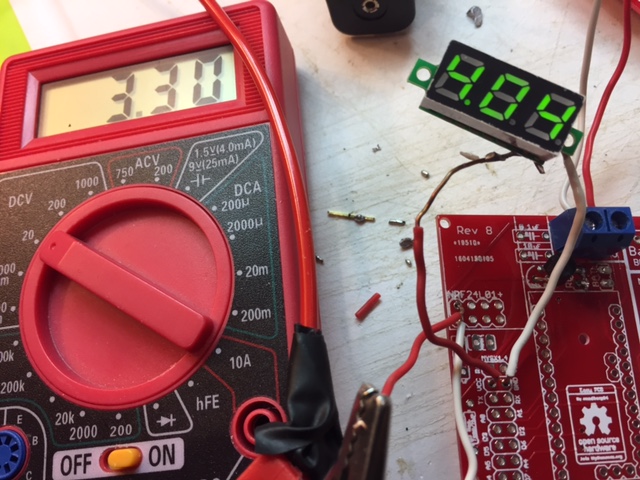OK, looks like I had multiple problems.
I somehow missed the instructions about "don't solder both", and was also slightly confused about the directions because I am using a battery (LIPO), but following the "5V regulated" instructions. When the instructions mention battery, it always mean a 3.3V battery. I had the BAT jumpered, and then I tried with and without the REG jumpered.
At the same time, I believe I damaged the MCP1700 regulator - I will have to take it off and test it.
So in the interest of getting this resolved quickly, I started all over again with a new board, new regulator, and jumping only REG. It worked! Here is the picture:

You can see that the radio will get 3.3V, and the rest of the board will get 4+ volts. (The TP4056 will cut it off as it goes down to around 3V).
So I will continue the build, and if everything goes according to spec, the radio, arduino, and sensors should all be OK. (Assuming the sensor can handle 4+ volts).
As far as the capacitors, it looks like the spec says 1uF on input and output. So I will put those where there are labels for .1 and 10uF. For the radio, I am well aware of its capacitor needs (learning the hard way). At this point, I always put the 4.7uF cap directly on the radio.
If everything goes well, I would recommend putting some sort of reference to LIPO batteries in the instructions. I couldn't be the only one who wants to do this.
Great support from everyone!
